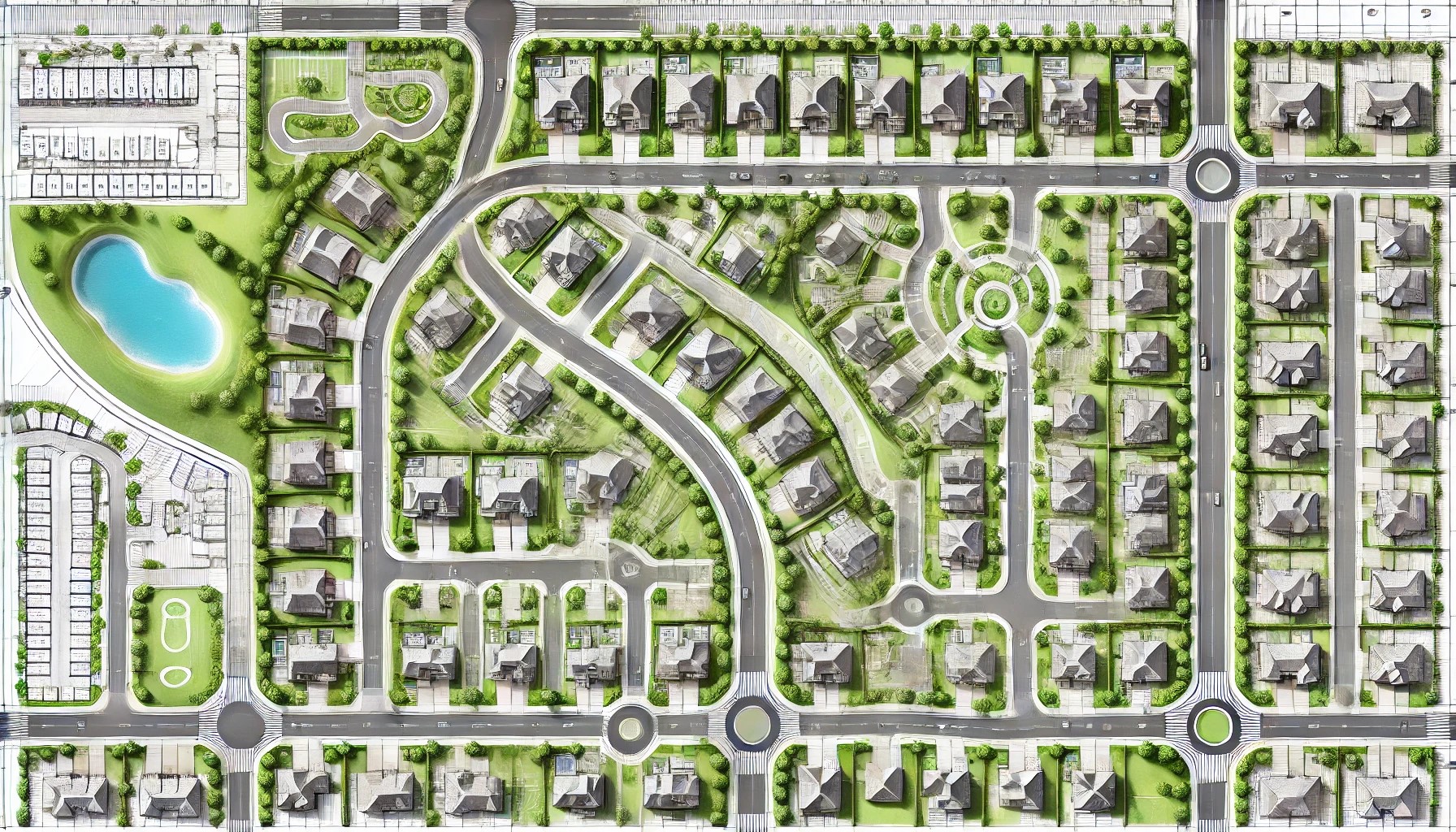
Single Family Development Planning
Single family development planning is a crucial process. It brings residential communities to life by focusing on optimal land use, design, and community integration. From choosing the right location and market niche to designing functional layouts that appeal to families, every step in the development plan plays a role in creating vibrant neighborhoods. Effective single family development planning involves understanding local zoning regulations, securing financing, and coordinating infrastructure to ensure a smooth, profitable project completion. Therefore by prioritizing sustainability, family-friendly amenities, and efficient land use, developers can maximize both community appeal and property value.
Identifying Your Market Niche
Find a niche or market where larger experienced developers are not touching and see how that can become a purposeful idea. Determine the purpose and benefit to the community not just your pocket. Define community, and make sure everyone understands your definition. Does the county, city, or township have a long-term plan you can tap into? Do they own property that can be allocated to meet that plan? Who and what are your obstacles?
Organizing Your Development Idea
Next, you need to organize your idea or niche and see how it fits into the role of the community. Evaluate what information is out there without spending any money. For instance, is there existing architectural, engineering, legal, or past acquisition? Did someone try to put something on the property and find it was not feasible? Has the related government entity spent money and nothing has moved forward?
Maintaining Confidentiality
Now it’s time to double down on keeping what you find to yourself. This is what I call incognito mode. Don’t fully disclose specific and pertinent information to anyone. Be vague and indirect about letting others know what you are finding out. Even in your trusted group, be careful, because they might accidentally disclose the availability of special financing, owner involvement, city contributions, and who you are working with outside your trusted group. When you talk to the city or other, let them know that you are working on a land-use study for future projects related to the local township or city. This is all true, just nebulous. Too much discussion, information, and sharing of your plans and dreams create interest and can only create future problems. People like to be in the know and they like to feel important and disclose things about others. Ok, you get the point, but one more caveat, everyone you talk to has friends in every industry, even the city employee you are talking to about the idea and location. Why give out too much information allowing others to be tipped off…
Evaluating Feasibility
Time to evaluate what you have found out. Can your idea or niche work? What are the obstacles and what are the positives? This is called the feasibility portion. Here is where you identify a market, a market strategy and review previous governmental actions. You want to get control of the property at this time if you don't have it already. Once you have control, it's time to allocate funds to specific environmental testing and assessment, refine your idea into a schematic, develop a cost analysis and contact potential financial sources.
Planning and Financing Strategy
Now we are ready for dealmaking, the planning and financing section. Every dream or plan has a strategy, assessment, negotiation, and role all bound up in the details that you have gathered. Moving all that information to the implementation of strategy, permitting, working drawings, and detailed financials with proformas for the development and operations is the outcome of this section. Implementation turns into pre-sales, site surveys, construction specifications, and negotiations to finance permanent and construction loans. Managing this section allows you inside information to coordinate interactions and gives you the ability to negotiate trade-offs and manage each agreement as you inspect each item you expect.
Negotiating Project Details
Negotiations fine-tune the details of the project. Marketing, management agents, architect, contractor, lenders, and equity brokers tighten their belts and put you first not them. You still don't own the property. Therefore it's time to acquire it by purchase, lease with option to purchase, owner financing, an option with a closing date. You get the idea. Now it's time to reveal your dream goal and niche. You will need contracts for the development, utility companies, infrastructure, engineering, landscaping, and common areas. You need bonding, draw schedules, equity schedules, construction oversite, and marketing oversite. Are we ready for sales yet?
Executing Your Marketing Plan
Your marketing plan should focus on pre-sales before the grand opening. Now it's time to stake some lots for new sales and speculative homes. Let's focus on operations, sales, management, and constantly evaluating the market and pricing to maximize revenues and profits.
Need Assistance? If you need guidance or want to discuss an idea further, click here to schedule a free appointment with me.